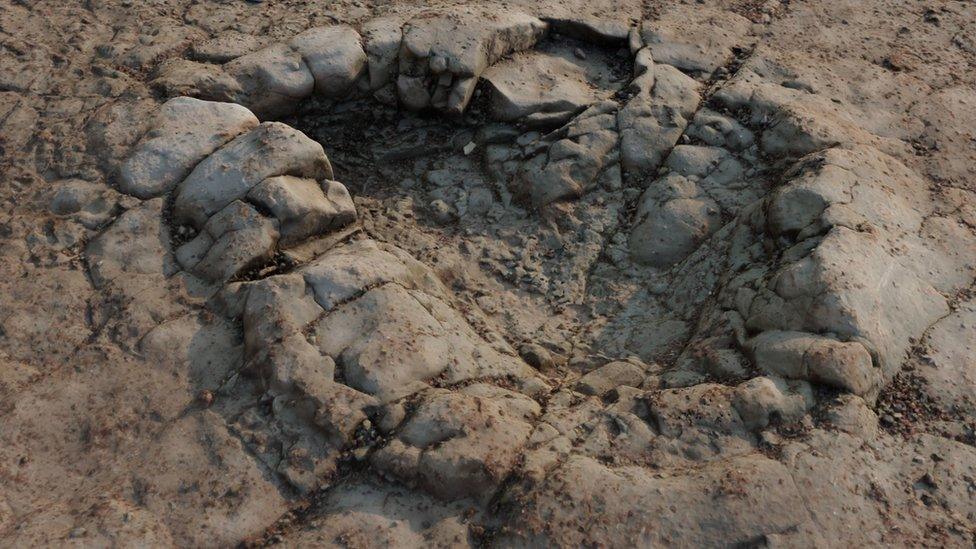Dinosaur footprints: Tracks made by long-necked dinosaur 200 million years ago
- Published
- comments

This dinosaur footprint dates back 200 years
A series of tracks found on a Welsh beach show large, long-necked dinosaurs once roamed Wales over 200 million years ago.
The imprints in Penarth, in the Vale of Glamorgan, which were reported in 2020 by a member of the public, have been studied by a team of experts.
Researchers say their large size and shape suggest that they could belong to a large sauropodomorph dinosaur and date back to the Triassic period - which was when the first dinosaurs appeared.
The footprints have been scanned using 3D imaging technology so researchers can look more closely at them.
The Big Question: What's the difference between all the dinosaur periods?
The prints are believed to be from an early ancestor of the giant diplodocus, one of the most well-known of the sauropods.
Prof Paul Barrett, who researches dinosaurs at the Natural History Museum in London, says that the number of footprints make it possible the site was a place where sauropods gathered.
"There are hints of trackways being made by individual animals, but because there are so many prints of slightly different sizes, we believe there is more than one trackmaker involved," he says.
The study into the footprints was conducted by a group of palaeontologists from Cardiff University, National Museum Wales, Natural History Museum, Liverpool John Moores University and the University of Lyon.
As it is too difficult to move them, the prints will be left in place until they are worn away by the sea.
How do dinosaur footprints become fossilised?
Usually when we think of fossils we think of the preserved bones of ancient animals, but their activity can also be preserved.
Dinosaur footprints like this one become fossilised and can be discovered millions of years later
In the same way that we leave footprints when we walk on the beach or in a muddy field, dinosaurs would leave footprints when walking on soft sediments like mud or sand.
These tracks can then be baked dry by the sun and then filled in by other sediments, making them more likely to form trace fossils.
Having survived millions of years, the footprints can show up today as big chunks of rock in the shape of a dinosaur's foot. Other prints show up when some of the sand and pebbles that filled the print hole get washed away again to reveal its outline.
- Published1 July 2021
- Published22 November 2018
- Published23 April 2019
